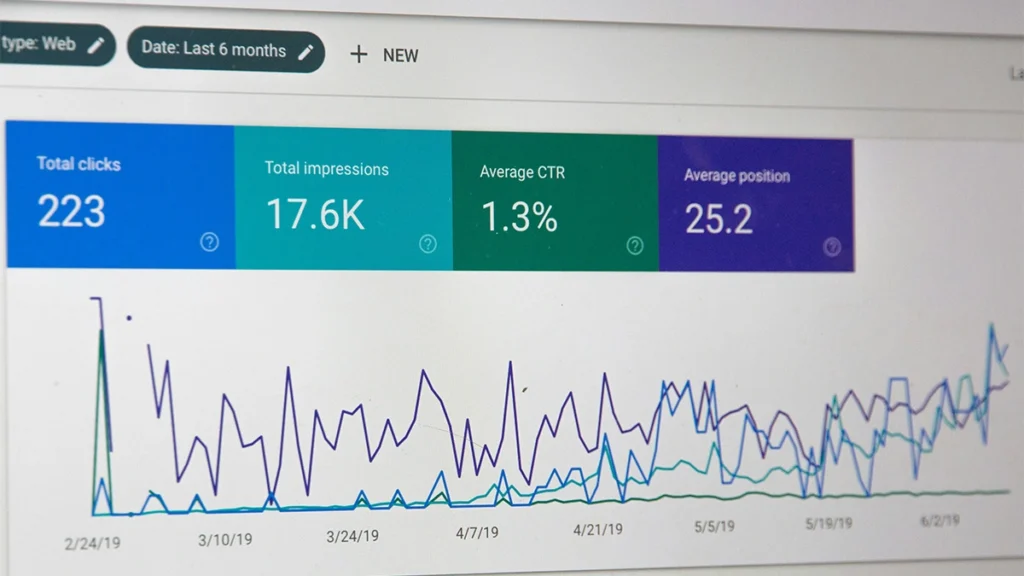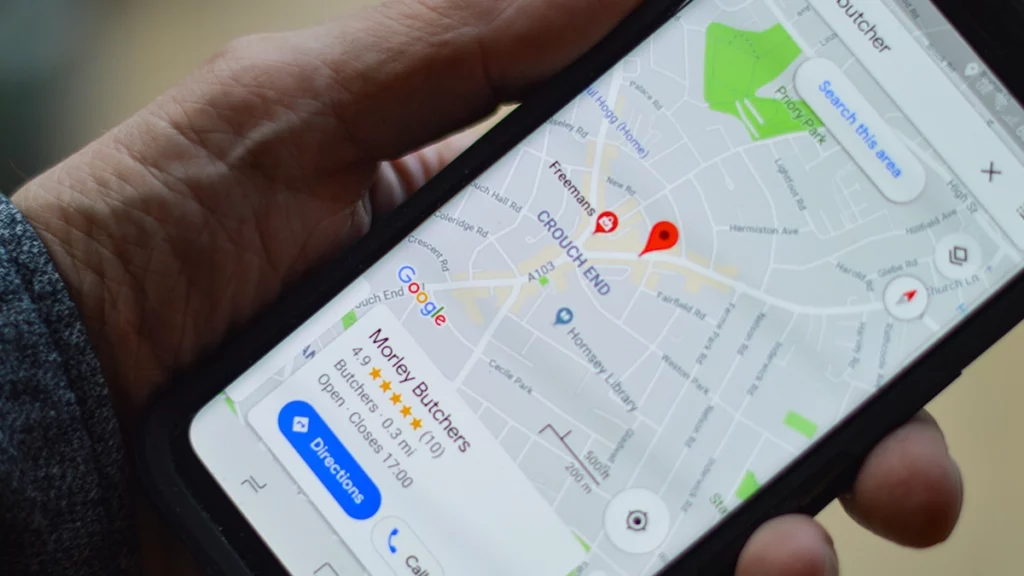As a small business or startup, you may find the financial strain of paying for ads which stop yielding results the moment your budget is exhausted. Every pound counts and every hour matters. SEO (Search Engine Optimisation) offers a stable alternative, helping your website climb higher in Google rankings, attract more visitors, and eventually convert those visitors into customers. But the burning question most business owners ask is: How long does SEO take to work?
The truth? SEO is not an overnight fix. Unlike paid ads, where you can switch traffic on like a tap, SEO is a long-term strategy. But if done correctly, it can be the most cost-effective and sustainable marketing channel for your business.
Why SEO Takes Time
Search engines want to provide the best answers to their users. To do that, they look at hundreds of factors: the quality of your website, the content you publish, your site’s authority, and how users engage with it.
Here’s why SEO results don’t happen instantly:
- Indexing & crawling:
Google needs to find and understand your site before it can rank it. - Competition:
If your competitors have been investing in SEO for years, you need time to catch up. - Trust building:
Search engines reward sites that prove consistency and authority over time. - Content maturity:
Blog posts, guides, and other content often take months to gain traction.
In short, SEO is a marathon, not a sprint. But the good news is, once momentum builds, the results compound.
read more
Is SEO Dead? An In-Depth Analysis
How Long Does SEO Take to Work?

Most small businesses start seeing noticeable improvements in 3 to 6 months, with stronger results coming after 12 months of consistent effort. For instance, imagine a soon-to-open café dedicating consistent effort to SEO from day one. By the fifth month, they reached their first 1,000 organic visits, turning these abstract numbers into tangible milestones. However, the timeline for SEO success still largely depends on how much you do, how well you do it, and how competitive your market is.
Here’s a realistic breakdown:
- 0–3 months:
Google indexes your site, small improvements in rankings, maybe a trickle of traffic. - 3–6 months:
If you’re implementing SEO foundations, you should start to see steady growth in organic traffic. - 6–12 months:
Your content begins ranking for more competitive keywords, domain authority improves, leads and enquiries pick up. - 12+ months:
SEO becomes a major traffic channel, competing strongly with ads or referrals.
What Effort = What Results?
Not every business puts the same energy into SEO. Here’s what you can expect depending on your level of effort and the potential impact on your website traffic:
Doing Nothing
- You rely only on word of mouth and maybe social media.
- Your site ranks only for your business name (if that).
- Zero visibility for potential customers who don’t already know you.
- Very little organic traffic.
- Stagnant growth.
Doing the Basics (Foundations Only)
- You optimise your titles, meta descriptions, and headings.
- You set up a Google Business Profile.
- You make sure your site loads quickly and works on mobile.
- You write a few pages of decent copy about your services.
Results:
- You might rank for some local or very low-competition keywords.
- You’ll get some organic traffic, but growth is slow.
- You might see a modest increase of 25-50% in visits.
- You’ll often get outranked by competitors who publish content regularly.
Committing to Consistent SEO
- You publish fresh, optimised blog content every month.
- You build internal links and acquire backlinks from other sites.
- You track performance in Google Search Console and improve weak areas.
- You invest in building your brand authority.
Results:
- Rankings climb steadily, potentially leading to a 100-150% increase in visits.
- Within 6–12 months, you can expect meaningful organic traffic, enquiries, and brand visibility.
- Over time, your website becomes a trusted source in your industry.
How Often Should You Publish Content?

This is one of the most common questions small business owners ask. The simple answer: the more often, the better – as long as quality doesn’t drop.
Here’s what different frequencies tend to yield in practice:
1 blog per month:
- You’ll see modest results.
- Small traffic increases after ~3-6 months, perhaps from long-tail keywords or local searches.
- By 12 months, you’ll have a content base; some compounding effect might begin.
- But growth tends to be slow unless you supplement with other SEO work (backlinks, technical optimisation, etc.).
2-4 blogs per month:
- Faster progress.
- Within 3-6 months, your traffic will grow more steadily.
- After 6 months to a year, many businesses at this pace start to see clear returns – rankings, enquiries, leads – especially for less competitive keywords.
Weekly publishing (≈ 1 per week):
- You build momentum.
- Early months are about getting noticed and indexed.
- By 3-6 months, you should expect solid improvements.
- by 6-12 months, you’ll likely have multiple posts ranking well, traffic increasing noticeably, and SEO becoming a reliable source of leads.
Multiple posts per week (2-4 or more):
- This is where high-performance sites tend to be.
- With this frequency, many companies see rapid growth in organic traffic, often achieving significantly more than those with only a handful of posts per month.
- But it’s demanding: quality control, resource investment, topic research, and promotion matter a lot.
Factors That Influence SEO Timelines
Even with consistent effort, SEO results vary based on a few factors:
- Competition:
Local café SEO will be easier than a national e‑commerce store selling shoes. - Website history:
An older, trusted domain often ranks faster than a brand-new one. - Content quality:
Thin or generic content won’t perform well. - Backlinks:
The more relevant sites that link to you, the faster you’ll climb. For example, reaching out to your local chamber of commerce for a listing can quickly boost your website’s credibility. This simple step provides an immediate win in your backlink-building efforts, demonstrating the feasibility and impact of even small-scale outreach. - Technical SEO:
A slow or broken website holds you back.
What It Takes to Compete on the First Page
Everyone wants to rank on the first page of Google. To get there, you need to match or outperform the competition. That usually means:
- Publishing in-depth, valuable content on the topics your customers search for.
- Optimising every page with relevant keywords and strong structure.
- Earning backlinks from reputable websites.
- Building a consistent online presence (social proof, reviews, mentions).
For many small businesses, it’s not about outranking massive national brands but about winning local and niche keywords – the ones your ideal customers are actually typing into Google.
What Do High-Ranking Companies Actually Do?
To help you judge what “good enough” looks like, here are what many of the high-performing sites or “first page competitors” are doing with their content frequency and publication schedules, according to recent studies:
Hubspot
According to HubSpot and other content marketing studies, companies that publish 16+ blog posts per month (≈ 3-4 per week or more) tend to get ~3.5× more traffic than those who publish only 0-4 posts/month. SEO Design Chicago
Marketing Insider Group
The “How Often Should You Blog? Research” from Marketing Insider Group and others found that 2-4 times per week appears to provide some of the best results (both in traffic and conversions) in a variety of industries (B2B, B2C). Marketing Insider Group
Ahrefs
Ahrefs, in their 2024 blogging stats, shows that ~50% of bloggers are publishing weekly or several times per month. Also, those who publish more are more likely to report stronger results. Ahrefs
Curata
In “Content Marketing Statistics – The Ultimate List,” ~38% of marketers report publishing content weekly or more often, with “the best business bloggers” even more likely to be posting weekly or more. curata.com
Incify
Case studies of high-volume content strategies (for example, a “programmatic SEO” medical content example) showing that producing 8-12 posts per month in certain niches could lead to very large traffic growth over ~11 months. incify.co
Action Plan for Small Business Owners
If you’re doing SEO yourself, here’s a practical roadmap:
- Month 1–2:
Fix technical issues, optimise existing pages, and set up Google Analytics & Search Console. - Month 3–6:
Publish at least one optimised blog per month. Build local SEO through Google Business Profile. Start internal linking. - Month 6–12:
Ramp up content publishing. Build backlinks (guest posts, partnerships, directories). Update older content. - 12+ months:
Review performance, target more competitive keywords, and continue content & backlink building.
Stick with it, and SEO can become your main source of new leads — without paying for ads.
Final Thoughts
So, how long does SEO take to work? For small businesses, you can expect to see the first signs of progress in around 3–6 months, but real, lasting impact comes after consistent effort over 12 months or more.
Do nothing, and your website will remain invisible. Do the basics, and you’ll see small wins. Commit properly, and SEO can become the most valuable marketing channel your business has.
The key is to stay consistent, set realistic expectations, and remember: SEO is a long-term investment that pays dividends for years to come.


